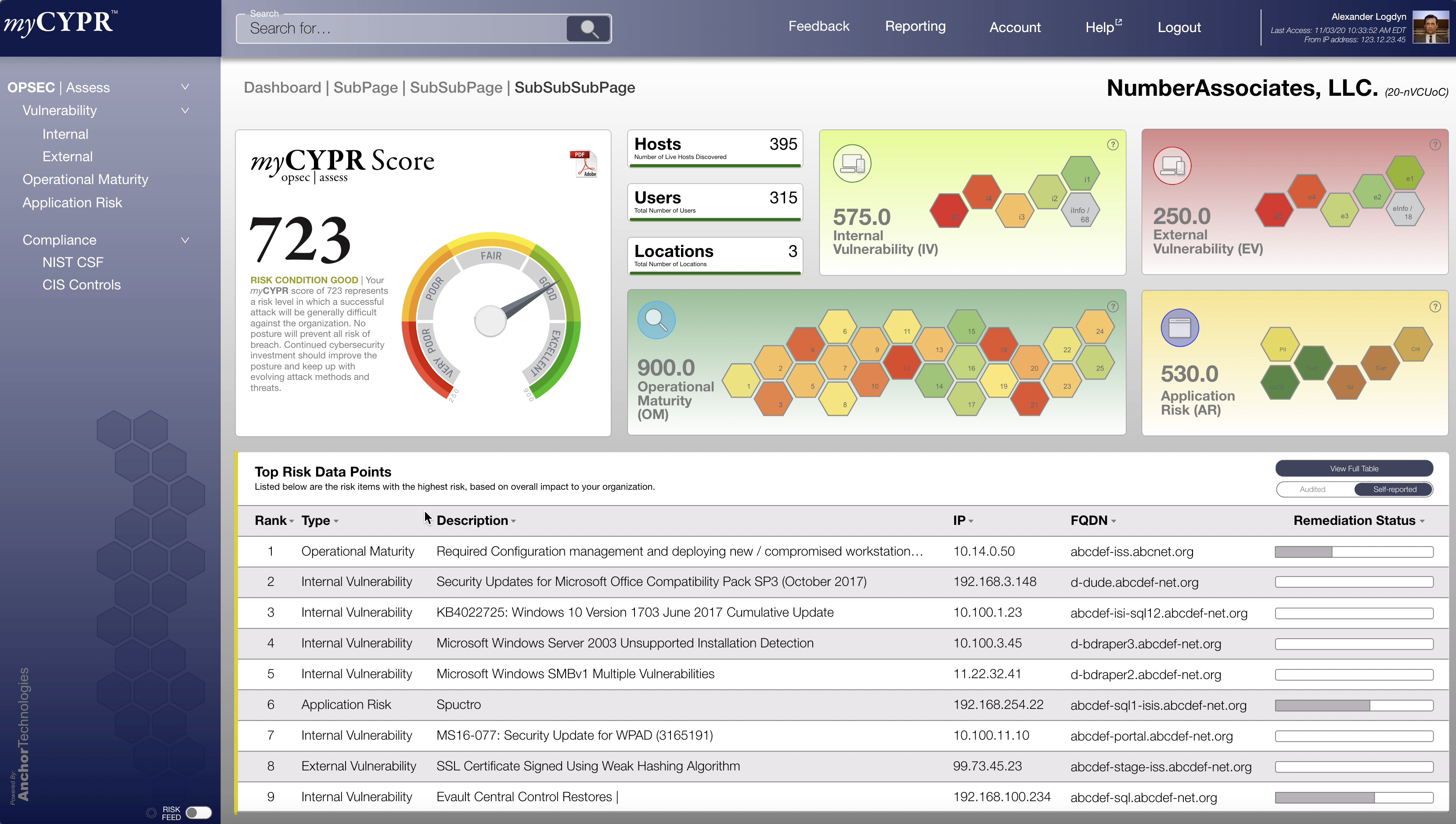What are Cybersecurity Risk Ratings
If you’re familiar with a credit score, you already have a better understanding of cybersecurity risk ratings than you think. A credit score is a quick and easy way to tell lenders about your creditworthiness, providing a prediction of how likely you are to pay back a loan on time.
Similarly, cybersecurity risk ratings, or security ratings, provide a quick and easy way to communicate an organization’s cybersecurity posture to internal teams, executives, and existing or potential third-party vendors.
Why Cybersecurity Risk Ratings?
In our increasingly digital world, Gartner, a global research and advisory firm, expects that security ratings will reach the status a credit score holds today when assessing the risk of existing and new business relationships. Soon, you may be as familiar with your organization’s security rating as you are with your own credit score; the future of your business may depend on it. Cybersecurity ratings are a useful tool to better understand or improve the cybersecurity posture of any organization, and to initiate risk-based discussions with company leadership or with third parties when establishing new business relationships.
Security Ratings for Internal Security & Third-Party Risk
As organizations continue to expand their digital ecosystems, both internal systems and third-party vendors play a critical role in overall security posture. Cybersecurity risk ratings provide a quantifiable way to evaluate and monitor the security practices of your organization and its partners. By using these ratings strategically, businesses can make more informed decisions, reduce exposure to risk, and build stronger, more secure relationships with third-party vendors.
How Security Ratings Support Smarter Vendor Relationships
Cybersecurity risk ratings are data-driven, quantifiable measurements of an organization’s overall cybersecurity performance and based off of a cybersecurity risk assessment. The scores are intended to provide organizations of all industries with an independent view into the security practices of the organization itself, as well as for their third-party vendors. Third-party vendors provide products and services to customers on behalf of an organization and as a result have access to sensitive company and customer data. When giving third parties access to sensitive data, it becomes crucial to consider their cybersecurity ratings so that the relationship does not become a vulnerability.
The Growing Complexity of Vendor Risk Management
Organizations are increasingly intertwined with a growing number of third-party vendors. Not only do today’s third parties require more access to the primary organization’s data assets, but they are also increasingly working with their own third-parties. According to Gartner, this has multiplied the size and complexity of third-party networks. It is a critical challenge for organizational leaders to manage the risks associated with third-party networks while remaining efficient and productive with no hinderance to the speed of business. Obtaining security ratings for your organization and third parties helps to secure your internal environment, as well as mitigate the growing risk associated with third parties.
Where Security Ratings are Falling Short
While cybersecurity risk ratings have become a popular tool for evaluating internal and third-party security postures, many of the current solutions on the market fall short of delivering a truly accurate or comprehensive view. Inconsistent scoring models and limited data inputs have created gaps in how risk is measured—leaving organizations and vendors frustrated with ratings that may not reflect reality.
Inconsistent Scoring Models and Limited Transparency
As with credit score providers, there are currently several security rating providers on the market. Despite the benefits of cybersecurity ratings, the businesses and third-party vendors who currently use them are sometimes left dealing with ratings that fail to capture the true picture of their organizational cybersecurity posture. This is because there is currently no universal scoring method for cyber risk ratings, making it so different providers can potentially deliver different risk scores depending on the data chosen for assessment. If a company feels their score is not valid, the existing processes to dispute ratings are tedious and difficult to overturn. Current cyber risk ratings providers utilize open-sourced intelligence, or data gathered from publicly available sources. While this information is valuable to scoring, only assessing open-sourced data means a company’s score could be marked by the narrow scope of information available publicly or by information that is not updated regularly.
Lack of Input from Vendor
Current cybersecurity ratings providers also fail to utilize input from the companies and vendors that are being rated. When positioned as a benefit, this makes the ratings sound convenient and easy, as little input or resources are required from the company being scored. Unfortunately, this also prevents the company being rated from being able to provide verifiable and valid data that could strengthen their score, furthering the potential for ratings that fail to depict the true organizational security posture.
The Data Makes the Score
Given the shortcomings in the current cybersecurity risk ratings market, myCYPR aims to help organizations accurately identify and manage risk internally and for their third-party vendors. While current security rating providers only score organizations based on a single data set, myCYPR offers organizations the choice of up to three data sets. These data sets range from open-sourced intelligence to a highly detailed next generation security assessment, backed by the expertise of a cybersecurity consulting team. The range of options allows organizations to customize a program to match their unique budget, organization size, risk profiles, or for multiple third-party vendors. The cybersecurity consulting power behind myCYPR also allows organizations to be involved with their own score by providing data for consultants to consider in the scoring process using an interactive web dashboard. Combined, myCYPR’s features allow organizations to be more involved in the risk rating process and deliver the most accurate risk score possible.
As cyber security ratings become increasingly vital to business operations, it will be equally as important to choose the right risk rating provider. See, score, and secure your organization with myCYPR.

